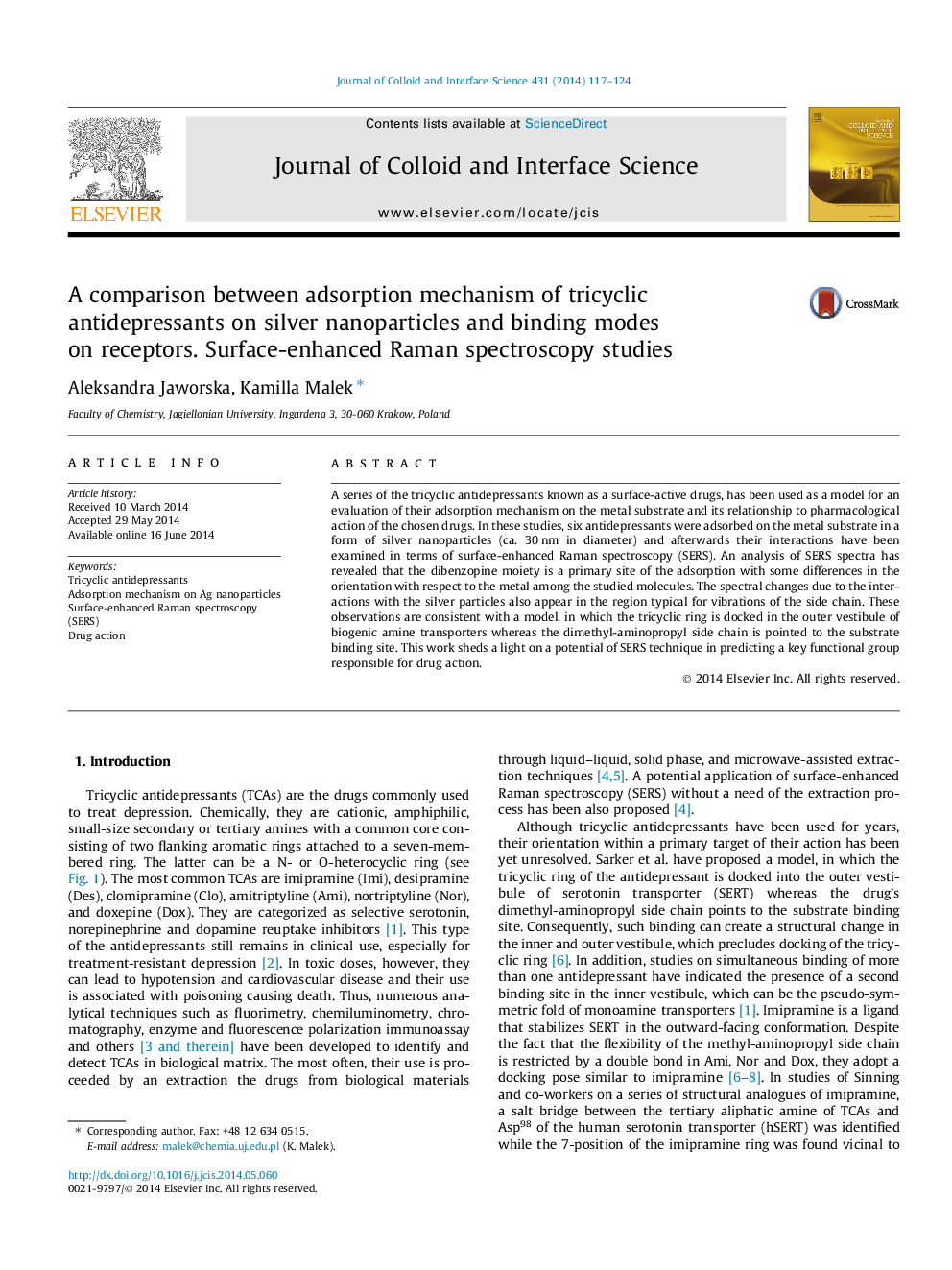| Article ID | Journal | Published Year | Pages | File Type |
|---|---|---|---|---|
| 607081 | Journal of Colloid and Interface Science | 2014 | 8 Pages |
•Cyclic antidepressants are studied in terms of surface-enhanced Raman spectroscopy.•The adsorption mechanism of the drugs on the silver is discussed.•Orientation of the drugs on the silver is compared with their binding in receptors.
A series of the tricyclic antidepressants known as a surface-active drugs, has been used as a model for an evaluation of their adsorption mechanism on the metal substrate and its relationship to pharmacological action of the chosen drugs. In these studies, six antidepressants were adsorbed on the metal substrate in a form of silver nanoparticles (ca. 30 nm in diameter) and afterwards their interactions have been examined in terms of surface-enhanced Raman spectroscopy (SERS). An analysis of SERS spectra has revealed that the dibenzopine moiety is a primary site of the adsorption with some differences in the orientation with respect to the metal among the studied molecules. The spectral changes due to the interactions with the silver particles also appear in the region typical for vibrations of the side chain. These observations are consistent with a model, in which the tricyclic ring is docked in the outer vestibule of biogenic amine transporters whereas the dimethyl-aminopropyl side chain is pointed to the substrate binding site. This work sheds a light on a potential of SERS technique in predicting a key functional group responsible for drug action.
Graphical abstractFigure optionsDownload full-size imageDownload high-quality image (54 K)Download as PowerPoint slide
